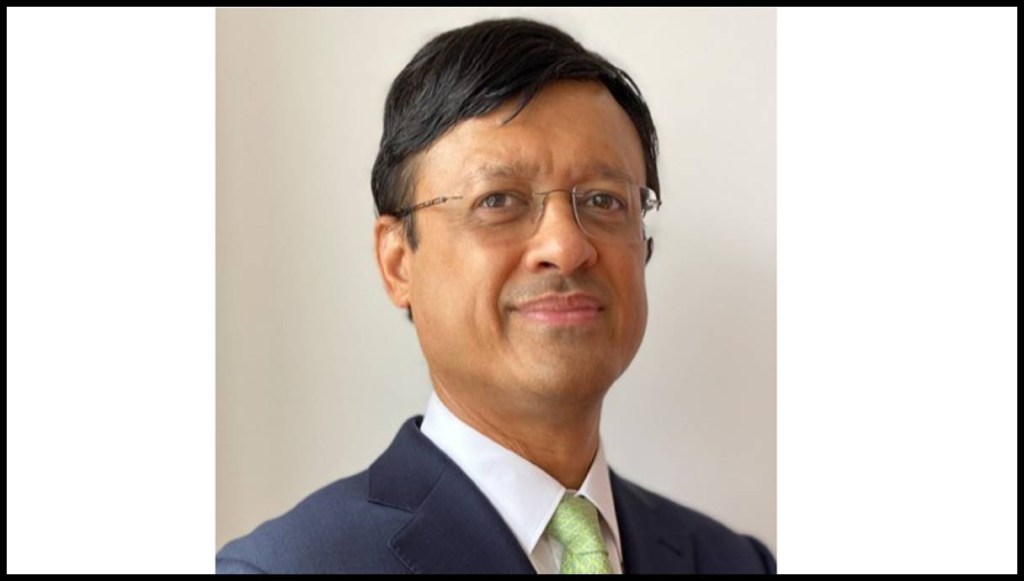Sanjeev Prasad, managing director and co-head, Kotak Institutional Equities, believes consumption demand could taper off after the current bump because private capex is slow and not enough jobs are being created. Prasad tells Shobhana Subramanian that the risk appetite for capex has fallen. Excerpts:
How do you read the market?
It looks like the market will be range-bound for some more time, with a high floor and a low ceiling, setting aside any major geopolitical events. I am more positive now than I was some time back because earnings seem to be stabilising and FY27 will be a decent year unlike in FY26 when we have seen a lot of downgrades. Valuations are still high but I have more confidence in future earnings growth. So, my view now is more neutral to positive.
The Nifty trades at 20x estimated FY27 earnings…
Yes, that is not so bad. It has taken a year or so for valuations to come to slightly more reasonable levels. I am getting confidence the worse may be over for earnings downgrades. The same time last year for the Nifty 50 EPS, we were looking at 1,250; that is now 1,085. For FY27 we were looking at 1,420, that is now 1285. I am more confident FY27 earnings can come through unlike for FY26 when I was worried. The economy is growing and we could see nominal GDP at 10% next year. Of course, it is all subject to global factors etc.
Will consumer demand sustain post the bump since few jobs are being created?
There are two worries. The first is the job losses in the IT sector and the weak sentiment in the IT sector. Although most people will retain their jobs, they will be careful about spending on high-ticket spends like real estate and auto. Next, the India-US tariff saga could impact sectors like textiles, etc, which employ large numbers. So far exports have not been impacted so much, but eventually at 50% tariffs, exports will not be viable for buyers in the US.
So, could demand taper off post the festive season?
There will be a bump for the next few months and after that it will slow down for sure. How much will depend on what happens in other parts of the economy, namely like private sector capex and whether we are going to see a meaningful recovery there or not. It doesn’t look so, unfortunately as of now. Beyond let’s say, the electronics manufacturing chain, we are not seeing too much investment.
There are not many jobs…
If government capex slows, — the Centre and states — the real estate cycle will also slow, I think. Based on this, it doesn’t look like we are going to see a sudden acceleration in job creation. So, you could see a slowdown in consumption after the bump. Depending on when the 8th Pay Commission award comes, there could be a brief lull and then a pick-up. But, these are all one-off factors and the Pay Commission benefits are for government employees. So, we should be prepared for some slowdown. Without private capex and outsourcing, where is the impetus going to come from? At some point, India must create a large number of decent quality jobs.
What will prompt foreign investors to come back?
Valuations have to become a lot more favourable. Maybe we need some more time correction or moderate price corrections. Also, on a relative basis, they find a lot more value in markets like China or South Korea which they did not find so exciting earlier and where valuations are ultra-cheap even after strong rallies. China is up 40% in CY25, but is trading at lower than a multiple of 14x one-year forward basis, while India is trading at 21x. Also, lots of investors say India doesn’t have companies that play on emerging themes like AI, Biotech, robotics, etc. Forget world-class companies, there are no companies in the forefront of technology.
Will companies invest if real rates are high?
Real rates should not matter over a long period. One reason for private capex being weaker is that the opportunity set for the private sector has shrunk. In the last big cycle they were investing in electricity, metals, oil & gas, telecom and roads. This was after the then NDA had opened up many sectors. There were tailwinds in a strong global commodity cycle.
But today there are just two and a half sectors where they are keen to invest, renewables, metals and a little in telecom. The number of risk takers has also gone down, compared with the previous cycle. Right now, we are down to a handful. Also, the risk appetite has gone for whatever reason even though balance sheets of companies and banks are in better shape.
Legacy consumer firms have slowed…
So in the roughly ten years until say about FY19, staples and discretionary companies grew their profits at a CAGR of 10-15%. Also, in that decade, you had low global interest rates, pretty much near zero nominal rates. On the back of that you saw a massive re-rerating; companies started the decade at a 20-25X PE and by the end went to 50x PE, on the assumption earnings would grow at high to mid teens CAGR and interest rates would remain low in perpetuity. Now, we have a situation where the growth rates probably will not go back to those levels because there is more competition from D2C brands, private labels etc. Also, the moats of distribution of legacy brands have become shallower. General trade is the dominant channel but there are many more options, modern retailing, online and big box retailing etc. The market structure is a lot more fragmented. This means the volume growth in the future will be split across many more players. And the competition means more pressure on profitability.

